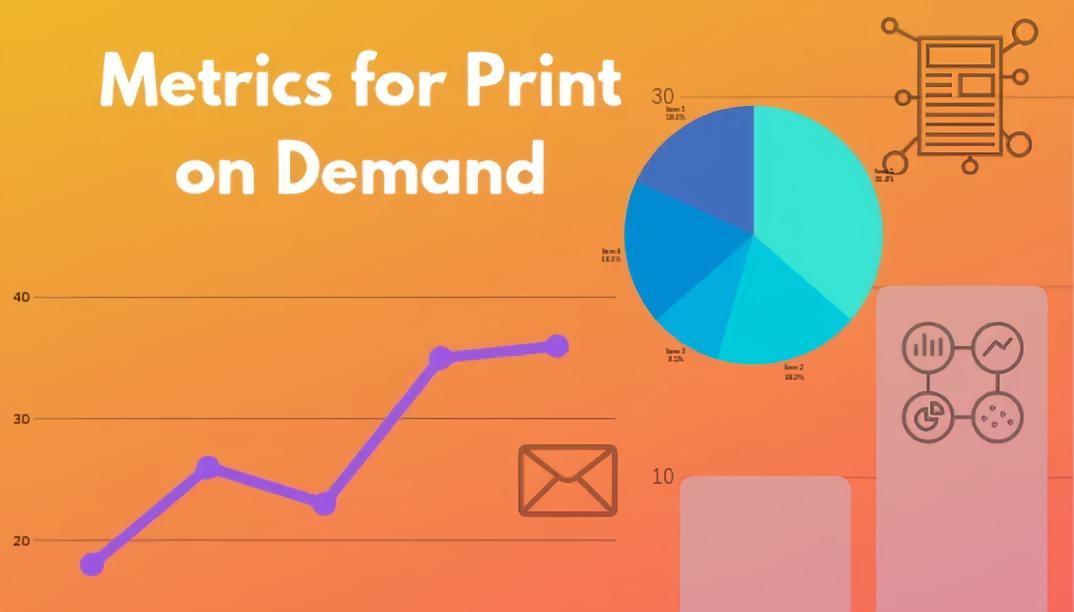As Parthenon has its columns and as you want to reach your goals strategically, your business also needs to have the monuments to base oneself.
Having your own KPI and metrics is a MUST to understand your performance, growth and strategy where to move further. They point out whether you are doing the right thing, the wrong thing, the best thing or the better thing.
As it was said by Avinash Kaushik (Author, Digital Marketing Evangelist for Google)
“If you don’t give data a purpose, data will not have a purpose.”
There are millions of metrics, but you should select for yourself only ‘the chosen’ ones and eliminate everything that not help. Focusing on a metric that doesn’t fit well to your business goals can lead to the wrong conclusions.
And also not only about wrong metrics, please check other mistakes you can do having your POD.
But don’t get really obsessed with metrics. To say ‘stop’ to yourself - what is more important.
Don’t measure everything that can be measured.
In this case - “less is more”.
But firstly some guidelines how to select proper KPI and metrics specifically for your demand:
1. Metrics should follow your strategic business goals
2. There are quantitative with qualitative metrics you can track and you need to combine both of them to achieve the best result
3. They should be measured frequently
(if you choose KPI or metrics that are analysed only per quarter or half of the year - they may be important in building global strategy, but less important in a workflow success measurement. If you face a problem right now and you need to deal it ASAP, fractional metrics will be much useful.
4. Please keep them organised and accurate in one analytics system. All of your team members need to know in what exactly place to find them and how you actually call them. Without any cyphers.
So, we chose for you a list of metrics which we consider crucial specifically for POD and strongly recommend to follow.
And again one quote our team like so much:
“You don’t have to outsell your competition today. You just have to outsell yourself tomorrow”
POD is the one in the e-commerce field. So choosing the metrics for your own need you will consider customer, marketing and product sides - the holy trinity of every e-commerce business.
Metrics you would better not follow
But firstly we want to warn you about metrics which seem to us totally useless. They aren’t as important as they look. ̶B̶u̶t̶ ̶s̶t̶i̶l̶l̶ ̶s̶o̶m̶e̶h̶o̶w̶ ̶p̶e̶o̶p̶l̶e̶ ̶c̶o̶n̶t̶i̶n̶u̶e̶ ̶t̶o̶ ̶u̶s̶e̶ ̶t̶h̶e̶m̶ ̶i̶n̶ ̶t̶h̶e̶i̶r̶ ̶a̶n̶a̶l̶y̶s̶e̶.̶
Ok, so what metrics are in please-don’t-use-case?
There are so-called Vanity metrics.
Yeap, you may count how many times people signed in to use your service, how many subscribers or page views but what else these numbers can give the deal is to keep them as your leads. You may have a good “downloads” rate or total usage of service - but does it really show is your product valuable?
BTW, so popular ‘Bounce’ metric is totally Vanity metric!
For what sake do you need to know on what page people jump over to another website? It just means or your product is bad or your website is bad. If you don’t have any information what they exactly did on your website, but to track on what page they left - is a waste of time.
The same story with Number of unique visitors.
It shows only how many people saw your website or your content. But what’s wrong - it tells you NOTHING about how their journey feels. Why these people left? Why they stuck around? How many of them actually did a purchase?
Total metrics are bad.
Just simply bad.
Why do you need to know how much e-mails have you sent totally since the very beginning?
What’s the point to count the total amount of your app downloads or total orders since the first day you launched?
To know the amounts is good in a limited period of time because you will see the dynamics. but to count it globally - very useless.
Lagging metrics
Lagging metric - a bad metric to follow. Why?
They are measured in big amounts of time. If you face a problem right now or want to deal with something in the nearest future - annual or quarter metrics are too big.
Better to portion them into a monthly or weekly or even daily measurement.
Average number metrics
Lovely and meaningless metric. It would be useful if you make a research in a tiny segment or in a specific field. In other cases, John has 10 apples and Jack has 1. In average they have 5. Brilliant metric!
Ok man, so what metrics are good?
Good metrics are:
- always a ratio or a rate.
This is a constant. You will for sure know what you need to change to improve other metrics because of the dependence on one another. - leading - because it simply predicts what’s going to happen.
- Understandable
In your company will always be a private and individual metric you follow.
And usually it’s called somehow strange and looks like a cypher from aliens.
Just make sure you and your colleagues understand what it means.
So what metrics exactly to follow?
Conversion Rate
Conversion Rate is a simple quotation - how much people who visit your website actually make an order.
The logic is easy - it shows how much revenue you visitors bring you on average.
By the way, it shows the customer order journey. How many of your customers accomplish the funnel: from landing page to view the products, from viewing the products - to make an order, from making an order - to make the order again?
Value-per-Customer
This metric shows the effectiveness of your marketing campaign.
It is calculated easily - the total website revenue is divided by total website visits.
Cost per Acquisition
This metric measures by dividing the total cost you spent for conversion by the total number of conversions. If simply - the amount you pay per your customer according to your marketing efforts.
Return on Ad Spend (ROAS)
This one is one of the easiest revenue-based metrics to measure. It demonstrates you the amount of revenue you receive of each advertising dollar spent.
Here is vice versa count - the higher number you get the better it is.
Cost of production
If simply - the cost of materials you used and the labor to produce your products. In the POD reality - how much money do you per every item: the price of a garment, print, shipping + the cost for using third side help (Printify, Printful, etc.)
Return of Investment (ROI)
POD also requires some money to spend on it but you need to be aware if it worth it or not.
One of the main metrics of the whole marketing world. How to calculate?
Benefit of investment is divided by the cost of investment
Volume Produced per week/day/hour
Figure out how efficient and profitable your shop using these metrics.
Why do you need this? Because some days or even hours will be more engaging than others and you can use these numbers in planning your marketing campaign and optimize manufactures.
Top 5 Largest Customers
This metrics will help to figure who is your the main targeting auditory is. Who is your persona that brings you money?
New customer orders vs. returning customer orders
Do you focus on customer acquisition? Or you cherish the old and loyal customers?
This metrics will show you that.
To gain new customers is more expensive than to keep the old one. So, attract and hook the new ones, but keep the old squad engaged as well.
Maybe something specifically for POD?
Metrics for POD are super individual and when you will be more experienced you will select for yourself on what to focus better.
The main metric for every POD business will be the level of satisfaction with your product - quality of garment and print.
But still we have something to recommend for you specifically for POD.
Image Quality Metrics
Here you will measure the average size of images and dimensions people upload to your website.
According to the image size will the customer be able to make an order? How the image size will influence the quality of the print or the product? Will the customer be satisfied with it?
Preprocessing metrics
The specific of PODs is creating goods on a scale for shop owners. T
he customers of these shops want to get their orders asap. So if your preprocess takes too much time, they will just leave!
Lots of refunds are caused because of people detest to waite. So check how many operations do they do before actually make an order and how much time it takes. Less is more!
Hope it was useful for you!
But remember the golden rule - your product can be successful only if your product of the product is good.
Almost forgot. Did you read our interview with Davis Siksnans - the guy who made Printful as it is right now?
Not yet?
Go and check this success story of entrepreneurship in POD.
You are selling not the prints or T-shirts, but the opportunity for others to be successful and having a side business. So your growth depends on the growth of others.
Do it good or any metric will help.


